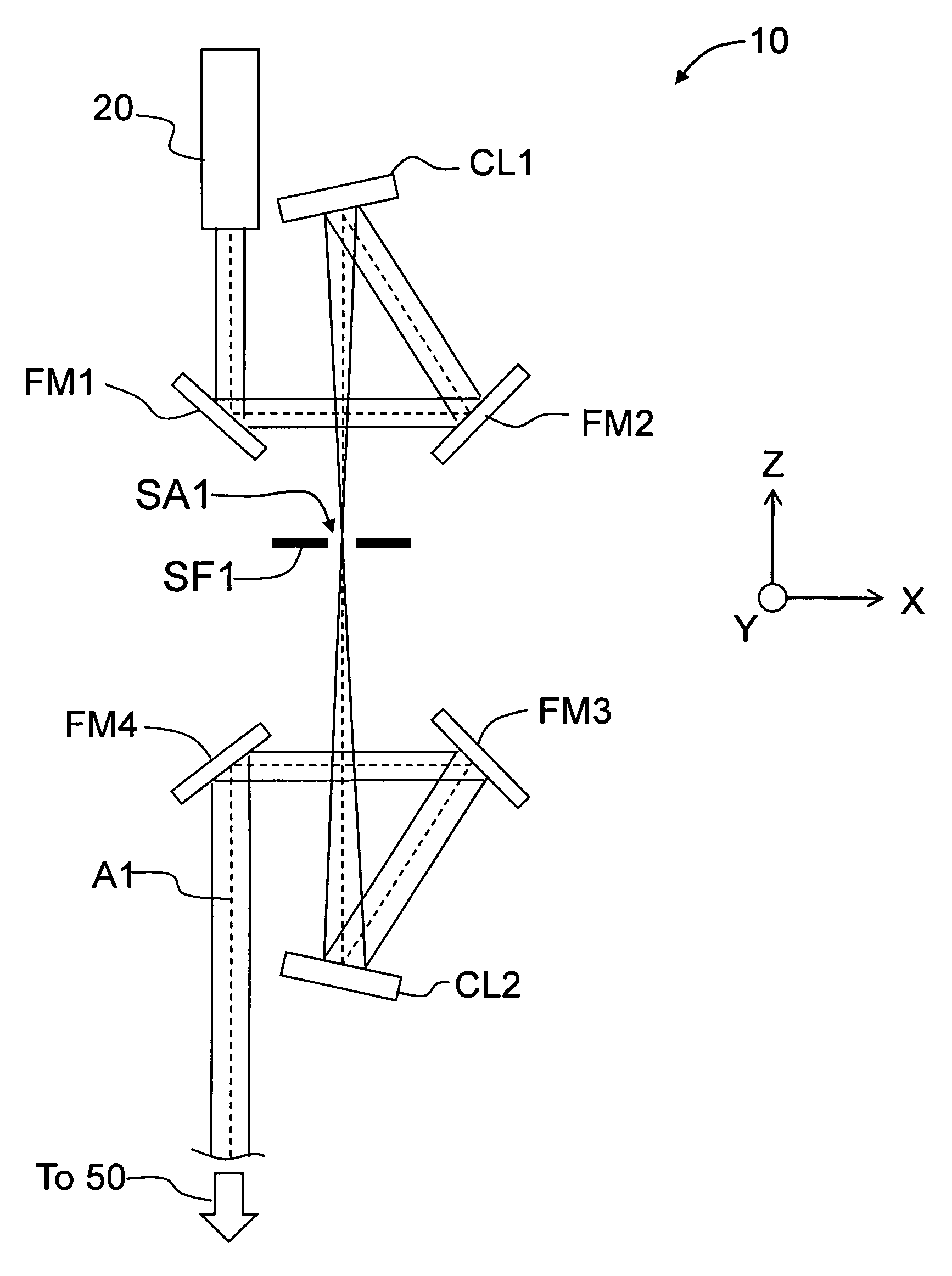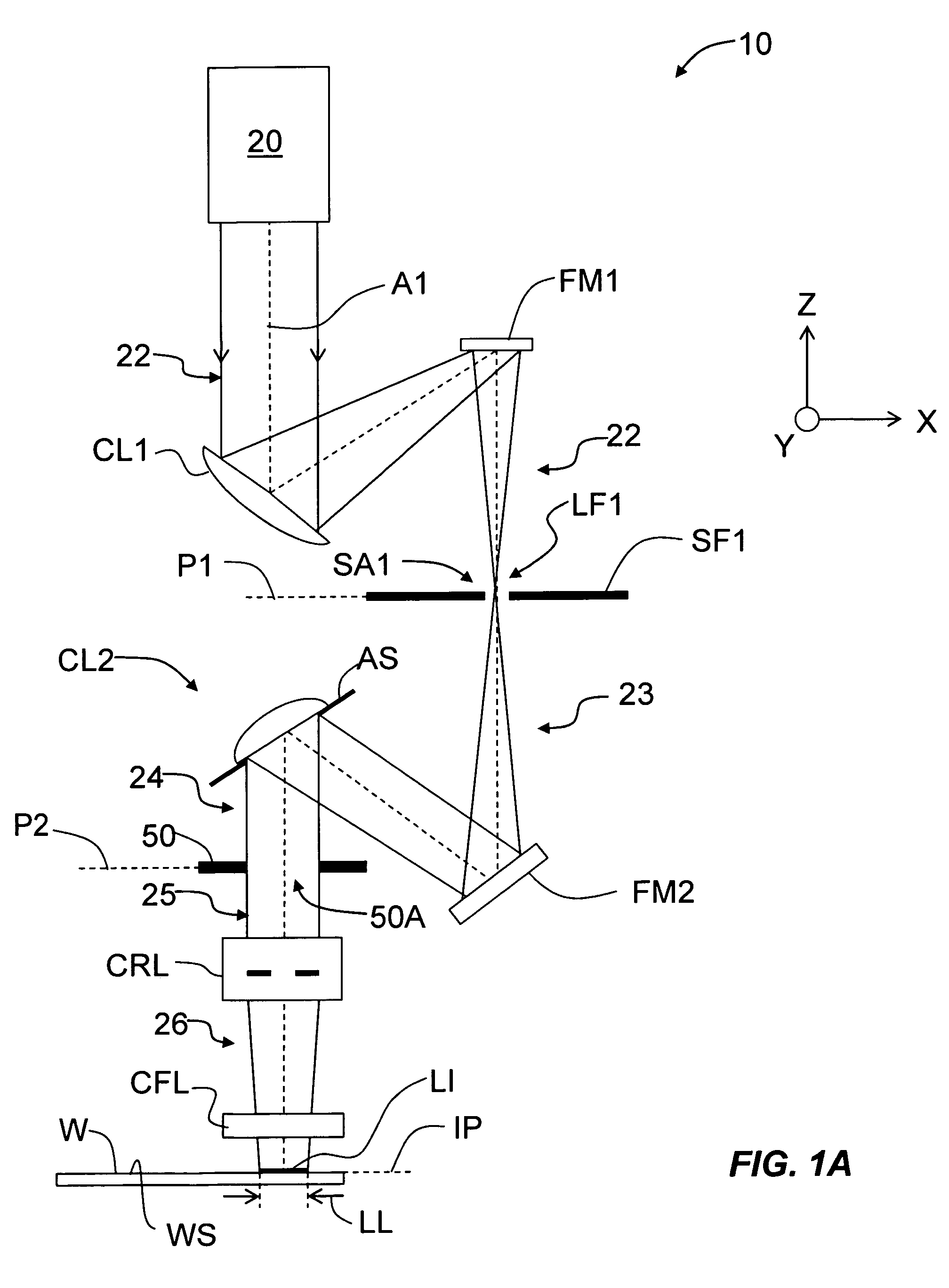Line imaging systems and methods for laser annealing
a line image and laser annealing technology, applied in the field of line image formation, can solve the problems of inefficient use of high-intensity light from the light source, inability to use a binary optic approach to produce a long, narrow line focus, and inability to achieve uniformity based on kohler principles
- Summary
- Abstract
- Description
- Claims
- Application Information
AI Technical Summary
Problems solved by technology
Method used
Image
Examples
examples
[0040]As discussed above, conventional line-forming optical systems are optimized to produce a Gaussian light beam, which is then truncated to pass a narrow central portion of the light beam, resulting in a substantial loss of light in the final output light beam.
[0041]FIG. 6 plots an example normalized intensity versus position of input light beam 22 at spatial filter SF1 for a conventional line-forming optical system. The spatial filter width W1=WC, which corresponds to forming a substantially Gaussian light beam 23 in the X-direction. In the calculation of the plot of FIG. 6, the spatial filter width W1=WC=2*(λ / D)*F=0.87 mm, where the laser wavelength λ=10.6 microns, the focal length F1 and clear aperture (diameter) D of cylindrical lens system CL1 is F1=900 mm and D=22 mm.
[0042]The length LL of line image LI is 7.47 mm and is defined as a normalized intensity of ≧0.9. The power density of the light beam at the image plane (and thus at wafer surface WS) is 63.3 watts / mm2. Conspic...
PUM
| Property | Measurement | Unit |
|---|---|---|
| Length | aaaaa | aaaaa |
| Length | aaaaa | aaaaa |
| Width | aaaaa | aaaaa |
Abstract
Description
Claims
Application Information
 Login to View More
Login to View More - R&D
- Intellectual Property
- Life Sciences
- Materials
- Tech Scout
- Unparalleled Data Quality
- Higher Quality Content
- 60% Fewer Hallucinations
Browse by: Latest US Patents, China's latest patents, Technical Efficacy Thesaurus, Application Domain, Technology Topic, Popular Technical Reports.
© 2025 PatSnap. All rights reserved.Legal|Privacy policy|Modern Slavery Act Transparency Statement|Sitemap|About US| Contact US: help@patsnap.com



